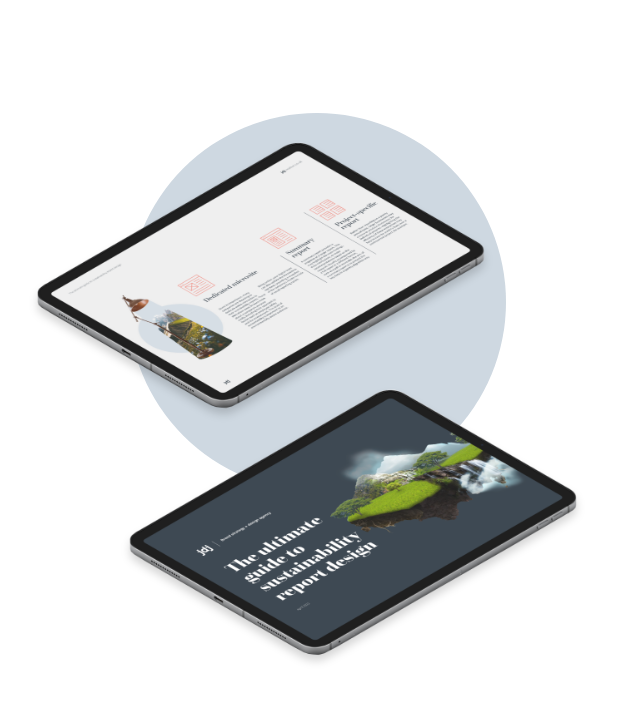In the past companies distributed all their reports in printed format. Nowadays the ease of digital media has made print less desirable. Because of the resources used in printing and distributing a report, it may make more sense to move to online platforms to disseminate it efficiently.
However, while it may seem counterintuitive to produce a printed document promoting sustainability, it’s worth highlighting that paper itself is an eco-friendly product, being both biodegradable and coming from a sustainable source – trees.
To further boost your eco-credentials, if you are printing your report, consider using recycled paper and choosing a printer enrolled on a carbon capture scheme. This means the planting of new trees offsets any emissions created during production and transit.
If you choose to go down the digital route, there are several options. Perhaps the simplest is an online pdf.
Choosing this medium means your designers can layout the report in a similar format to a traditional printed report, but with the added benefit of interactivity. This makes it possible to incorporate links, audio and video into the report, allowing readers to dive deeper into the data.
A further benefit is the facility to search for specific content, which may appeal to skim readers.
Given its importance, many companies are choosing to dedicate entire microsites to their sustainability reports.
These sites allow users to learn more about a company’s purpose easily, including their approach to factors such as employee safety and the environment. This level of accountability is important to an environmentally aware audience.
Being online, your digital team can also update the microsite in real-time, providing a snapshot of the company’s results outside of usual reporting cycles.

“
A summary report provides a snapshot of a larger report.
This may highlight the main findings, draw conclusions, or make recommendations based on the research.
Usually accompanied by a full report in a different format, such as a pdf or microsite, the aim of a summary report is to present the key data in a quickly digestible way.
Rather than reporting on a purely annual basis, larger businesses may choose to produce disclosures for individual projects.
Highlighting the efficiency of these enterprises may help to ease the public’s fears over a controversial project, for example.
Are you looking to publish your first sustainability report, or improve the design of your current offering?
Download our guide to sustainability report design and learn:
✅ The most popular reporting frameworks and how to use them
✅ The five key steps to successful sustainability reporting
✅ Our top tips for excellent report design
If you want to partner with an external agency, JDJ has over 10 years of experience designing reports for financial, educational, professional and technology companies in the UK and the US.
Knowledgeable about the major sustainability reporting frameworks and with a proven track record of producing reports which inspire investors, consumers and internal stakeholders alike, we’d love to help on your sustainability reporting journey.
Share
Sign up to our monthly newsletter to receive your guide to thought leadership design.

Sign up to our monthly newsletter to receive your guide to annual report design.

Sign up to our monthly newsletter to receive your guide to sustainability report design.
